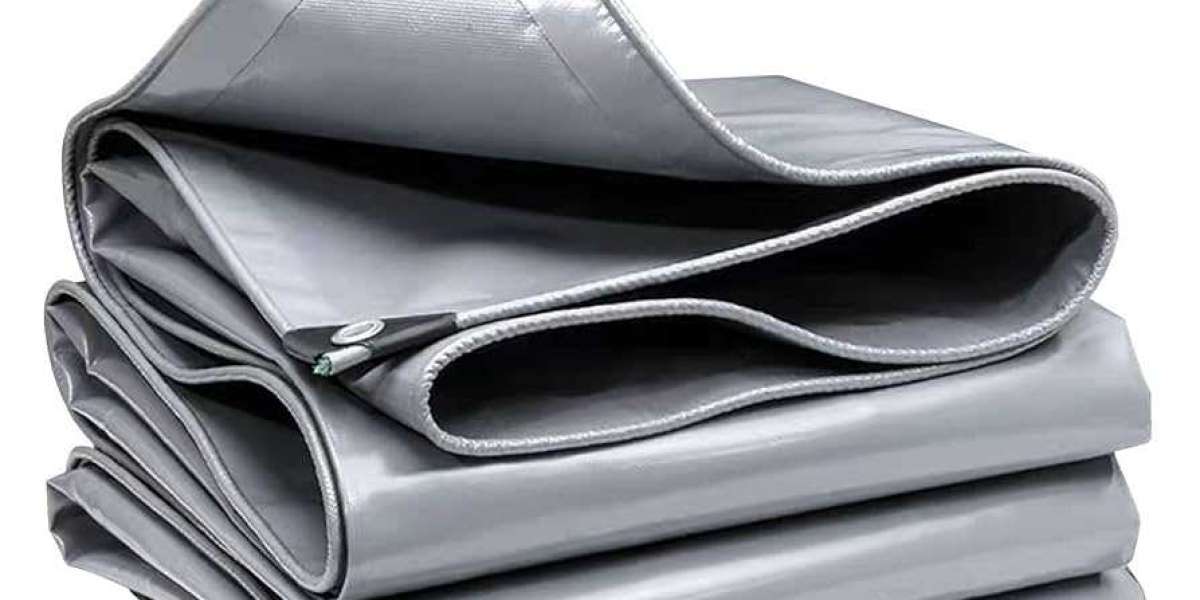One of the most useful and flexible materials for outdoor coverings is a heavy duty tarpaulin. From covering machinery to building a shelter to covering a construction site, tarpaulins are designed to endure. One of the most frequent problems users encounter, though, is correctly placing a Tarpaulin over a slanted surface. Since slopes naturally drain water, debris, and wind pressure downwards, improper installation can lead to ripping, water accumulation, or the tarp sagging out of position.
With proper skills, however, a tarpaulin sheet, particularly a waterproof tarpaulin or heavy-duty tarpaulin can be properly secured to sloping ground, guaranteeing longevity and adequate covering. Read on for key tips and techniques to enable you to excel at this process.
Why Installation on Sloping Surfaces Is Difficult
Whereas flat surfaces impose no extra stress on a tarp, slopes impose extra stress. Water runs downhill due to gravity, wind easily catches the tarp, and tension is not uniform on the sheet. A tarpaulin can flap, sag, or get torn if it is not properly installed. This is especially problematic with pricey machinery, stored items, or buildings that depend on consistent protection.
That’s why correct installation is key when using a heavy duty tarpaulin on sloped ground or over angled frameworks.
Tip 1: Choose the Right Heavy Duty Tarpaulin
Not all tarps are created equal. If you’re working with sloping ground, always choose a heavy duty tarpaulin. Here’s what to look for:
- Waterproof Tarpaulin: Essential for preventing leaks and pooling.
- Reinforced Edges and Eyelets: Strong hems prevent tearing under tension.
- UV Resistance: Guards against sun damage, particularly on exposed slopes.
- Big Tarpaulin Size: Provides enough coverage without making material too thin.
Spending money on the correct tarp pays off in the long term as it will withstand damage and offer more trustworthy protection.
Tip 2: Anchor the Top First
During installation on a slope, gravity tends to pull the tarp downwards. To reverse this, always anchor the tarpaulin sheet at the top of the slope before anything else. Use firm anchors like stakes, concrete blocks, or immovable structures like fences or posts.
Securing the top edge gives you a good foundation that keeps the tarp from sliding down while you finish the rest of the installation.
Tip 3: Set the Right Tension
Loose tarps flail in the wind and fall apart fast, and overly tight tarps can tear. Balanced tension is the goal:
- Pull the tarpaulin tight in a smooth, even manner across the slope.
- Utilize bungee cords, rope, or ratchet straps for elastic yet secure fastening.
- Steer clear of sharp edges below that can puncture the tarp under tension.
Even tension across the sheet will assist in long-lasting usage, particularly on sloping surfaces where pressure points frequently occur.
Tip 4: Permit Water Runoff
Perhaps the most critical part of putting up a waterproof Heavy Duty Tarpaulin on a slope is controlling water flow. When water collects, the tarp will sag, stretch, and finally tear. To avoid this:
- Pitch the tarp slightly so that rainwater drains naturally off.
- Don't create flat areas where water can collect.
- For big installations, insert support beams or ropes below the tarp to direct water away.
This minor change significantly prolongs the life of a tarpaulin sheet and provides consistent waterproof cover.
Tip 5: Secure Strong Ground Anchors at the Bottom
The base of the tarp is as critical as the top. After securing the top edge, tie the bottom end securely to the ground to suppress flapping and wind uplift. Options are:
- Heavy-duty stakes hammered deeply into the ground.
- Sandbags or rocks for temporary sites.
- Fixed points or barriers for semi-permanent use.
For a big tarpaulin, scatter anchors evenly around the base such that weight and pressure are distributed uniformly.
Tip 6: Overlap for Bigger Coverage
If a single tarpaulin sheet is not large enough to cover the slope, overlap several tarps by no less than 12–18 inches. Always put the top tarp above the bottom one, thus water flows down the slope without penetrating the join.
Use water-tight tape, rope, or clips to hold overlaps snugly. This works particularly well in the use of heavy duty tarpaulins for building construction or agricultural use.
Tip 7: Windproof the Edges
Angular sections are subject to hard gusts of wind. The most susceptible parts of a tarp are the edges, and therefore it is most important to protect them.
- Double ensure all eyelets are utilized for fastening.
- Add additional grommets if needed.
- Think about trenching the edges into the ground for ground-mounted installations.
- By holding the edges firmly, you avoid the tarp ripping in strong winds.
Tip 8: Check and Tighten Regularly
A sloping tarpaulin installation is not a "set it and forget it" affair. With time, weather, tension, and use, the tarp can slacken or be damaged. Get into the habit to:
- Check tension every week or following storms.
- Clean off debris like leaves or branches that can accumulate on the tarp.
- Replace damaged ropes or rusty eyelets at once.
Maintenance pays off on extending the life of your heavy duty tarpaulin, particularly under weathered exposure outdoors.
Practical Uses for Sloping Tarpaulin Installations
Sloped installations are prevalent in many situations, so these tips are commonly applicable:
- Construction Sites: Draping building supplies over rough terrain.
- Agriculture: Covering hay bales or dirt piles on sloping agricultural land.
- Camping: Installation of shelters or rain covers on hillside grounds.
- Emergency Use: Installation of speedy covers following storms or landslides.
In either situation, a watertight tarpaulin makes an effective shield, as long as it is fitted carefully.
Conclusion
Laying a heavy duty tarpaulin on an inclined surface involves planning, correct anchoring, and proper consideration of water runoff. By selecting an appropriate tarpaulin sheet, having correct top anchoring, having an even tension, and employing sound ground anchors, you can make your tarp work efficiently and also last longer.
Whether you are using a large construction tarpaulin, an outdoor waterproof tarpaulin for storage, or several sheets overlapped for larger projects, these tips ensure stability and longevity. With proper maintenance and intelligent installation methods, your tarp will continue to be a reliable resource for any sloping surface problem.







